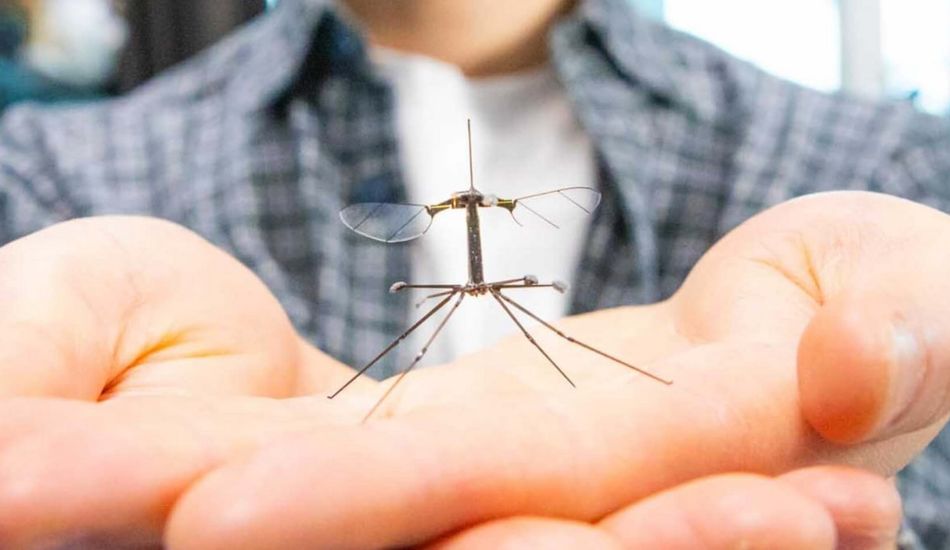
RoboBee's New Landing Gear: Crane Fly Legs Pave Way for Future Applications
Imagine a future where tiny robotic bees, inspired by nature's ingenuity, assist in crucial tasks like pollination and environmental monitoring. This vision, long pursued by Harvard's Microrobotics Laboratory, is now closer to reality thanks to a significant breakthrough: the RoboBee can now land softly!
Previously, the RoboBee's landings were more akin to controlled crashes. Now, drawing inspiration from the humble crane fly, researchers have equipped the RoboBee with four delicate, jointed legs. These appendages, combined with an improved control system, allow for a smooth and controlled descent.
Crane Fly Inspiration
The crane fly, often mistaken for a giant mosquito, possesses a remarkable landing strategy. Its long, slender legs provide stability and cushioning upon impact. Researchers at Harvard, led by Robert Wood, recognized the potential of this design and adapted it for the RoboBee.
Christian Chan, a PhD student involved in the project, describes the previous landing procedure as a "drop and pray" approach. The new design, however, allows for a "gentle plop-down," significantly reducing the risk of damage.
Overcoming the "Ground Effect"
One of the key challenges in designing the RoboBee's landing system was overcoming the "ground effect." This phenomenon, also experienced by helicopters, occurs when the air vortices generated by the wings create instability close to the ground. For the RoboBee, with its minuscule size and weight (0.004 ounces and a 1.2-inch wingspan), this effect is particularly pronounced.
Nak-seung Patrick Hyun, a former Harvard postdoctoral fellow, emphasizes the importance of minimizing velocity and dissipating energy during landing. The new legs and controller effectively address these challenges, allowing the RoboBee to land gracefully on various surfaces, including leaves.
Protecting Delicate Actuators
Beyond a smooth landing, the new design also protects the RoboBee's fragile piezoelectric actuators, which function as its "muscles." These actuators are prone to damage from impact, so the compliant legs act as shock absorbers, preventing fractures during landings.
The Future of RoboBees
The team's next goal is to equip the RoboBee with sensor, power, and control autonomy. This "three-pronged holy grail" will enable the RoboBee to operate independently and perform a wide range of tasks, including environmental monitoring, disaster surveillance, and artificial pollination. The possibilities are vast and could revolutionize various fields, bringing science fiction closer to reality.
The RoboBee's evolution is a testament to the power of biomimicry, where nature's designs inspire technological innovation. As these tiny robots become more sophisticated, they hold the promise of addressing some of the world's most pressing challenges, from food security to environmental protection.
Source: Gizmodo